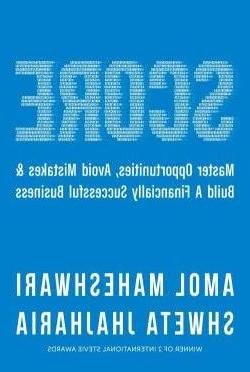Proprietários de empresas e equipes de gerenciamento que entendem como executar o final do 'negócio' do negócio - finanças e o idioma do dinheiro - obtenha resultados reais. Eles se concentram em melhorar suas habilidades críticas de negócios para criar sucesso financeiro sustentável e não confiam em "intervalos de sorte". Então, como os líderes empresariais podem melhorar seu domínio financeiro para se tornar líderes melhores e mais informados?
Alguns conceitos financeiros reúnem as melhores maneiras de entender o desempenho de um negócio. Ao combinar o conhecimento obtido de várias partes das demonstrações financeiras, os líderes empresariais podem descobrir o que seus negócios precisam medir e trabalhar para melhorar. Escolha sobre como implantar seu dinheiro (capital). Entre várias opções disponíveis para eles, eles podem investir em depósitos bancários, usá -los para construir um portfólio de propriedades ou investir em ações de outras empresas. recebeu um retorno de 10%. Você compara isso com o retorno que poderia ter alcançado implantando seu dinheiro em outras avenidas. Riscos diferentes estão associados a diferentes investimentos, que também precisam ser considerados. O valor é criado quando o retorno gerado em uma empresa é maior que o custo do capital. O ROIC mede o retorno total de todos os provedores de capital para os negócios recebem, enquanto o ROE mede o retorno que os acionistas do patrimônio recebem. Gerenciamento de parceiro e fusões e aquisições em
How to measure returns and value creation
To measure the value the business creates, you need first to measure the return that capital deployed in the company can generate and compare this against what the capital costs – often in opportunity costs.
The principle here is that every business owner has a choice over how to deploy their money (capital). Among several options available to them, they can invest in bank deposits, use them to build a property portfolio or invest in shares of other businesses.
Therefore, an accurate assessment of the use of this capital in the business is to review the return that the investment has earned for the business owner and compare it to the return that they could have earned elsewhere.
If you invest £1 million in your business and generate £100,000 in net profits, you have received a 10% return. You then compare this against the return you could have achieved by deploying your money in other avenues. Different risks are associated with different investments, which also need to be considered. Value is created when the return generated in a business is more than the cost of the capital.
The most critical measures of return in a business are the return on invested capital (RoIC) and the return on equity (RoE). The RoIC measures the total return all capital providers to the business receive, whereas the RoE measures the return the equity shareholders receive.

This is the first instalment in the series of blogs about business finances and how to ensure that you are creating real value.
About the authors:
Amol Maheshwari is the Managing Partner and M&A head at IDEA DE CRESCIMENTO. Shweta Jhajharia é uma das principais treinadoras de negócios globais e fundador da Idea de Crescimento. Seu novo livro Pontuação é o Manual Ultimate para ajudar os proprietários de empresas e líderes sênior a dominar os fundamentos das finanças para impulsioná -los a um sucesso sem precedentes. →
Next steps…
Book a complimentary breakthrough business discovery call and gain the clarity you need to take your business forward →
